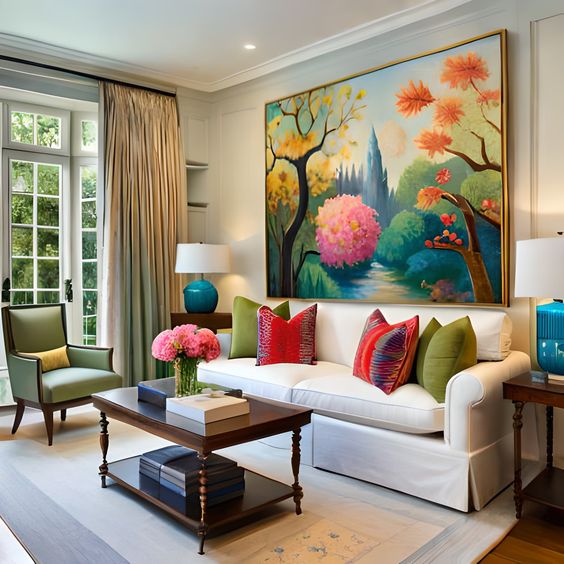Choosing the right paint colors for small rooms is a crucial aspect of interior design. The colors you select can significantly impact the perception of space, light, and overall ambiance. In this guide, we’ll explore various strategies to help you make informed decisions when it comes to painting small spaces.
Understand Undertones
Undertones play a pivotal role in determining the final look of your room. These subtle hints of color beneath the surface can either enhance or clash with your chosen color scheme. To navigate undertones successfully, start by understanding the basic categories: warm, cool, and neutral.
Warm undertones, such as reds and yellows, add coziness, while cool undertones like blues and greens provide a refreshing feel. Neutrals, like beige and gray, can balance between warm and cool. When selecting paint colors, pay attention to the undertones to ensure they complement rather than conflict with your overall vision.
Using Color Architecturally
Color can be a powerful tool in emphasizing or downplaying architectural features within a small room. Consider the existing elements such as trim, moldings, and built-in shelves. Lighter colors tend to make spaces feel larger, so if you have intricate architectural details, a neutral palette can highlight them without overwhelming the room.
Experimenting with different colors on architectural elements can also add visual interest. For instance, painting the trim in a slightly lighter or darker shade than the walls can create depth and dimension. Remember, the goal is to use color strategically to enhance the overall architecture while maintaining a sense of spaciousness.
Avoid Dark Hues
While dark colors can be alluring, they may not be the best choice for small rooms. Dark hues tend to absorb light, making the space feel more confined. If you’re drawn to deeper tones, consider using them as accents or on a single focal wall rather than covering the entire room.
Opting for lighter shades, such as pastels or soft neutrals, can help reflect light and make the room appear more open. However, this doesn’t mean you have to completely avoid dark colors. Strategic placement and thoughtful combinations can still incorporate your favorite deep tones without compromising the perceived size of the room.
Choose the Right Paint Sheen
The sheen of your paint can influence the overall look and feel of a small room. Different sheens reflect light in varying ways, affecting how colors appear on the walls. In small spaces, it’s often advisable to opt for paints with a satin or eggshell finish. These sheens strike a balance between matte and glossy, providing a subtle shine without accentuating imperfections.
Consider the Amount of Natural Light
Natural light can transform the way paint colors appear in a room. The intensity and direction of sunlight can enhance or diminish certain hues. Before finalizing your color choices, observe how natural light interacts with your space throughout the day.
Rooms with ample natural light afford more flexibility in color selection. Lighter shades can be complemented by the sun’s rays, creating an airy and inviting atmosphere. However, if your room lacks natural light, you may want to lean towards warmer colors that can add a cozy and welcoming feel, compensating for the absence of sunlight.
Consult with Color Theory
Delving into color theory can provide valuable insights into creating harmonious and visually pleasing color schemes. Familiarize yourself with basic color combinations, such as complementary, analogous, and monochromatic.
Complementary colors, positioned opposite each other on the color wheel, create a dynamic contrast. Analogous colors, found next to each other, offer a more subtle and cohesive look. Monochromatic schemes, based on variations of a single color, provide a harmonious and soothing effect.
When applied to small rooms, these color theories can guide you in selecting a palette that enhances the desired mood and visual impact without overwhelming the space.
Create a Focal Wall
Introducing a focal wall is an effective way to add personality and depth to a small room. By painting one wall in a bolder or contrasting color, you draw attention to a specific area, creating a focal point that can distract from the room’s size.
Consider choosing a wall that naturally attracts attention, such as the one with a fireplace, large window, or the wall behind the bed. The key is to strike a balance between making a statement and maintaining cohesiveness. Use this opportunity to showcase your favorite color without overpowering the entire space.
